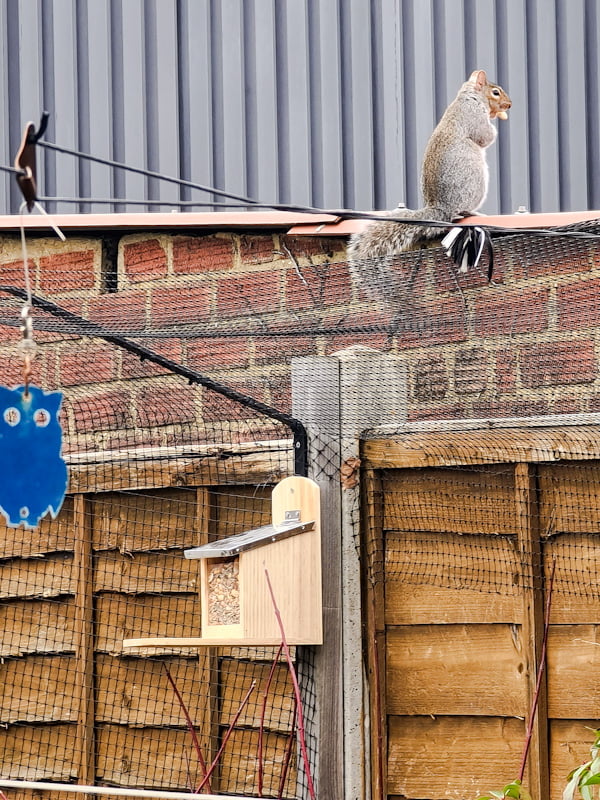On reading the story about the creation of a contraceptive specifically designed to reduce the population size of gray squirrels in the UK, I immediately thought of the feral cat in Australia. If you want to do something humane for feral cats on the planet, think of the feral cats of Australia where they are considered to be pests and vermin and where they are killed using wide range of cruel methods. Surely the more humane option would be a version of this contraceptive which is effective against squirrels?

The BBC reports on a plan to use oral contraceptives to control the gray population in the UK and we are told that it is making good progress. The plan includes luring gray squirrels into feeding boxes. Only gray squirrels can get into the boxes where they have access to pots containing hazelnut spread laced with a contraceptive which prompts the endocrine system to restrict the production of sex hormones. This leaves both females and males squirrels infertile.
The drug is not permanent and they are doing further tests on trying to find out how the dose can be made longer lasting and to ensure that it is safe in the wild.
They have built a special feeder with a weighted door which keeps out other species. In trials in Yorkshire and Wales they found that 70% of squirrels in each wood visited the bait boxes over a four-day period. Only two mice got into the boxes. The hazelnut spread is irresistible to gray squirrels. They have included a weighing system within the box which only lets the heavier greys have access to the contraceptive spread.
Computer modelling has concluded that this method of contraception could bring gray squirrel populations to the edge of extinction in some areas; maybe eradicate them from some areas. However, as you might expect, there needs to be a coordinated and widespread approach to make it work effectively.
Dr. Giovanna Massei believes that the technique could be used to help control the population of other invasive species and he quotes rats, mice, deer and wild boar. I think he has missed one very important animal: the feral cats of Australia!
It seems to me that it would not take an awful lot of science to use this technology which is quite near fruition and modify to make it suitable for the control of feral cats. It would be nice to think that some top conservationists in Australia are in contact with Dr. Massei from the UK government’s Animal and Plant Health Agency. The research is being funded by the UK Squirrel Accord which is a partnership between forestry and conservation organisations. £1 million has been raised to cover the research and development of this technique.
On a separate note, I believe that the gray squirrel is badly maligned in the UK and in other countries. They say that they damage trees and destroy them by stripping bark from them. I feed grey squirrels at the back of my garden and, yes, they do damage trees slightly but what I see is not enough to kill trees or cause me any real concern.
The broadcaster and naturalist Chris Packham, is very enthusiastic about the project and describes it as a “dream ticket” if it proves to be viable and practical. Certainly, a species-specific oral contraceptive is a great and humane method of dealing with unwanted and invasive species in many countries but top of that list, and I will say again, is the poor, cruelly-treated feral cat on the Australian continent where they are badly mistreated.
Below are some more articles on feral cat spaying and neutering etc..


Thanks Julie. Very impressive. I love the people who spay and neuter to improve cat welfare and the charities who fund it. And of course, the thousands of volunteers across the US who run TNR programs. They are heroes to me.
This is the surgery space where it all takes place.
The calm before the storm. The University of Florida veterinary students have spent the past four weeks studying how to improve neighborhoods with humane community cat management. The Grand Finale was a clinic in which they performed 374 spay and neuter surgeries in one day. This is all part of the Community Cat Management course offered by the Shelter Medicine Program at the University of Florida in partnership with Operation Catnip. This course is made possible by a grant from the John T. and Jane A. Wiederhold Foundation.